No products in the cart.
Return To ShopWhere to Find Sustainable Furniture Near You
Where to find sustainable furniture near you — refurbished and bespoke options in Harrogate and York
Refurbished sustainable furniture means pre-loved or salvaged timber pieces that have been professionally repaired, refinished and upgraded so they last longer and avoid landfill. This guide shows where to buy eco-conscious furniture locally, explains why restored wooden pieces often beat cheap mass-produced options, and how bespoke services bring reclaimed materials into kitchen and home design across Harrogate and York. If you’re searching for terms like “sustainable furniture Harrogate” or “refurbished furniture near me,” you want clear local choices and practical tips — how to check condition, what restoration methods really mean, and which finishes stand the test of time. Read on for environmental and cost benefits, where to visit locally, typical collections, the refurbishment workflow, and how bespoke kitchens can use reclaimed timber. We also include checklists and step-by-step guidance so you can choose upcycled furniture with confidence.
Why choose sustainable refurbished furniture nearby?
Buying refurbished furniture saves resources and delivers long-term value by reusing good timber and restoring existing craftsmanship instead of making new pieces. The process is straightforward: refurbish → refinish → repurpose. That reduces embodied carbon, keeps items out of landfill and preserves durable materials like reclaimed wood and strong joinery. The result is often a characterful piece that outlasts many cheap new alternatives and can be tailored with bespoke finishes or local repairs. Choosing locally restored furniture also cuts transport miles and supports a circular economy in your area. Knowing these benefits helps you judge condition, style and long-term value when shopping close to home.
Sustainable Refurbished Furniture By HDS shows how local workshops deliver everyday value: upcycled pieces, hand-finished surfaces, bespoke commissions and a Harrogate shop/warehouse where you can see restoration work and talk through projects. Our mix of hand-painted tables and spray-finished wardrobes — plus nationwide delivery where needed — demonstrates how a local studio can serve nearby customers while keeping sustainability front of mind. A showroom visit helps you assess finish quality, hardware condition and the level of restoration before you buy. Next, we’ll look more closely at the environmental case for upcycled furniture.
What are the environmental benefits of upcycled and refurbished furniture?
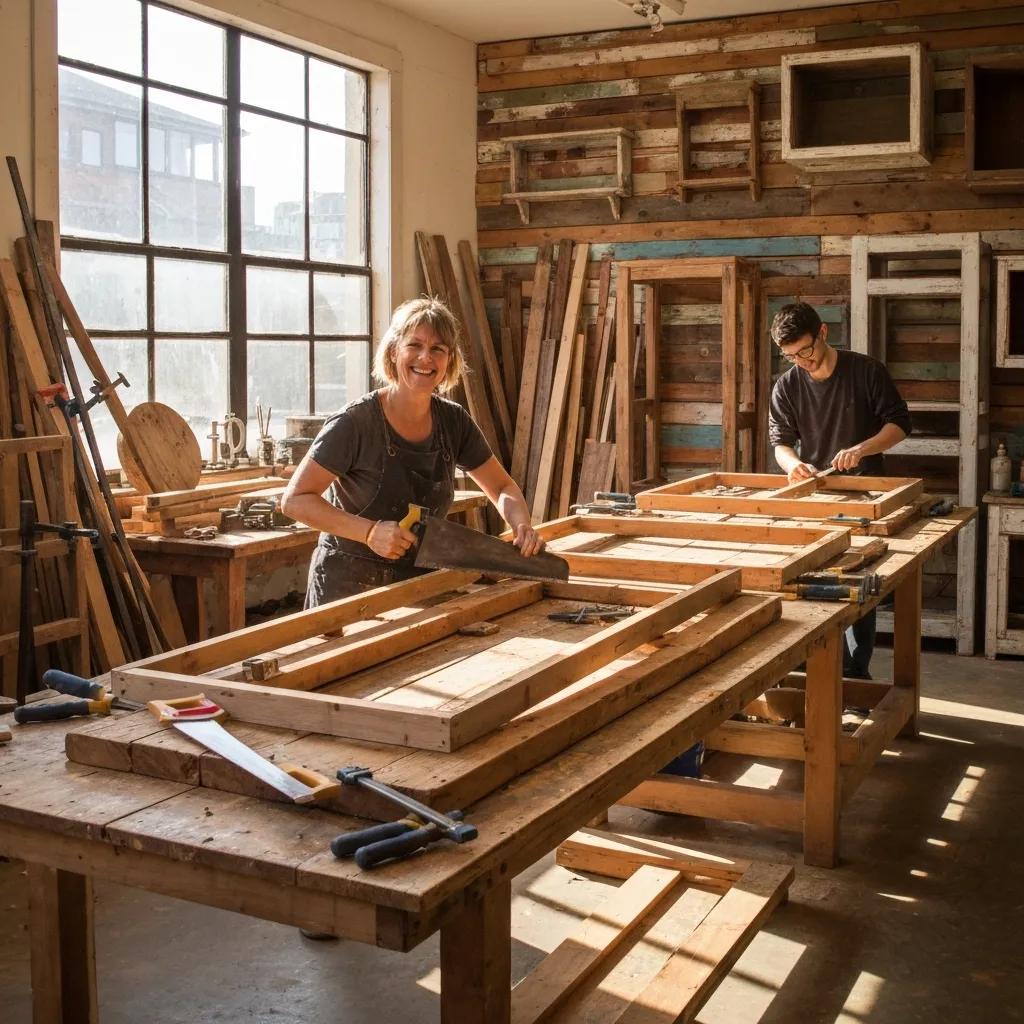
Keeping solid timber and hardware in use reduces landfill and cuts overall resource demand. Reusing a solid-wood dining table avoids felling new trees and the manufacturing emissions that come with new furniture — a direct drop in embodied carbon. Prioritising repair and local refurbishment over single-use mass production supports the circular economy and makes low-impact furnishing a practical choice. Market trends through 2025 show growing demand for quality, low-impact pieces that keep character while lowering environmental footprints, which is why refurbished options are becoming mainstream.
Local refurbishment also trims delivery emissions and strengthens regional supply chains, since shorter routes and nearby workshops mean fewer long-haul shipments. Next we’ll explain how restored pieces retain character and craftsmanship that mass-produced items rarely match, and why that matters when you want furniture that lasts.
How does refurbished furniture offer unique style and craftsmanship?
Refurbished pieces keep original joinery, patina and design details that carry history and personality — qualities mass-produced items rarely capture. Techniques like hand-painting, careful stripping or spray-finishing, and selective hardware renewal update the piece’s durability while preserving its look. The outcome is a one-of-a-kind item you can tailor in colour, distressing or fittings to suit a modern interior. Choosing restored furniture combines individuality with practical durability, encouraging long-term ownership and fewer replacements.
Knowing about craftsmanship also means understanding how restoration choices affect maintenance and lifespan: good repairs reinforce joints and use finishes that protect timber without erasing original features. That naturally leads to knowing where to find local shops and showrooms where you can inspect these qualities in person.
Where can you find sustainable furniture shops and showrooms in Harrogate and York?
Local sustainable furniture shops are usually small showrooms, restoration studios and independent retailers displaying finished pieces and offering commissions. When searching, favour venues that show workmanship — reinforced joints, even finishes and quality hardware — and that explain their refurbishment process clearly. Visiting a showroom lets you judge scale, finish options and the range available, from dining tables to wardrobes and vintage dressers. Many local makers also offer measurement and consultation services for bespoke work and can advise on nationwide delivery.
Plan visits around shops that publish before-and-after examples or have visible workshop areas so you understand how pieces were restored. Sustainable Refurbished Furniture By HDS operates a shop and warehouse in Harrogate (Unit 1B, Hollins Lane, Hampsthwaite, Harrogate HG3 2HL) where you can view hand-painted tables, spray-finished wardrobes and discuss bespoke commissions. Booking a consultation gives you the chance to see sample finishes and agree realistic timelines in person. Use the checklist below to prepare for a showroom visit and to know what to look for while you’re there.
- Bring accurate room measurements and photos of the space you’re furnishing.
- Check stability: examine joinery, weight-bearing elements and hardware.
- Ask about finishes, delivery options and any warranty or aftercare offered.
Turning up with measurements and inspiration images speeds the consultation and helps the maker produce a tailored proposal. Next we’ll outline the common product categories you’ll find locally and how to compare them.
What makes Sustainable Refurbished Furniture By HDS a local go-to?
At HDS we restore and upcycle wooden furniture into finished pieces that marry sustainability with craft. Our selection includes hand-painted tables, spray-finished wardrobes and bespoke commissions where customers can choose colours or configurations. Having a shop/warehouse in Harrogate means you can see quality firsthand, discuss made-to-measure options and arrange nationwide delivery when needed. Our focus on upcycling and bespoke work shows how local workshops can provide eco-friendly furniture with personal service.
Choosing a nearby workshop lets you evaluate restoration quality in person and commission made-to-measure pieces that use reclaimed materials and durable finishes. The next section explains the best way to book and prepare for a consultation at our Harrogate showroom.
How to visit and book a consultation at our Harrogate showroom?
Make the most of a workshop visit by preparing a short brief with measurements, photos and a budget range. Contact the shop to book a consultation, bring room dimensions and reference images, and be ready to discuss preferred finishes and delivery constraints. During the meeting you’ll review candidate pieces, see paint and finish samples, and discuss bespoke changes such as resizing or hardware swaps. Ask about turnaround, delivery methods and aftercare to make sure the restored piece will perform long term.
Arriving prepared keeps the consultation focused and helps us provide a realistic quote and timeline. Clear communication about transport and installation needs also avoids surprises on delivery — which is useful when considering product types and bespoke kitchen services covered below.
What sustainable refurbished furniture collections are available near you?
Local workshops and vintage dealers typically stock product categories such as dining tables, wardrobes, dressers and occasional vintage pieces updated for modern use. Each category differs in materials, style and likely condition — for example, solid-wood dining tables commonly need surface refinishing and leg reinforcement, while wardrobes often benefit from spray-finishing and new hardware. Understanding these categories helps you pick pieces with the best restoration potential and long-term use. The table below compares common categories, typical materials and what to expect in terms of condition and style.
Different refurbished categories bring distinct restoration needs and stylistic outcomes.
| Category | Typical Materials | Typical Condition / Style |
|---|---|---|
| Refurbished Dining Table | Solid oak, reclaimed pine | Surface wear; sound joinery; classic to rustic looks |
| Upcycled Wardrobe | Mahogany, reclaimed hardwood | May need door rehanging; can be hand-painted or spray-finished |
| Vintage Dresser | Mixed hardwoods, veneers | Drawer repairs often needed; repolishing or painted finish |
| Bespoke Commissions (incl. kitchens) | Reclaimed wood, new fittings | Custom sizing; tailored finishes; installation-ready |
This comparison helps match your needs to the right category and estimate how much restoration is likely required. Next, we describe typical dining, wardrobe and vintage options in more detail.
Which refurbished dining tables, wardrobes and vintage pieces can you explore?
Refurbished dining tables usually have solid tops and traditional joints that respond well to sanding, oiling or hand-painting for either a natural or contemporary finish. Upcycled wardrobes can be spray-finished for a smooth, consistent coat or hand-painted to show panel detail, with new hardware improving function. Vintage dressers often need attention to drawer runners and surfaces; these are ideal for bespoke finishes that suit modern interiors. When you inspect a piece, check structural soundness, surface evenness and drawer operation to judge restoration feasibility.
Knowing what to look for reduces the risk of hidden costs and helps you prioritise pieces that will give long-term value. The next section explains how bespoke kitchens and custom commissions generally work and the decisions you’ll make.
How do bespoke sustainable kitchens and custom furniture services work?
Bespoke sustainable kitchens follow a simple sequence: consultation, design, material selection, manufacture or refurbishment, and installation — all focused on longevity and waste reduction. You provide measurements and a brief; designers propose layouts that prioritise storage and durable surfaces; and choices such as reclaimed timber or low‑VOC finishes boost sustainability. Timelines vary with complexity, but the core steps — brief → quote → manufacture/refinish → install — stay the same. Bespoke work delivers a made-to-measure result that reduces leftover materials and fits your home precisely.
Sustainable Refurbished Furniture By HDS flags “Kitchens coming soon!”, signalling an upcoming service extension into bespoke kitchen projects that will follow the same consultative, sustainable approach. With a clear idea of product categories and workflows, you can now weigh the concrete benefits of buying refurbished locally.
How can you benefit from buying refurbished wooden furniture locally?
Buying locally refurbished wooden furniture brings financial, longevity and environmental upsides that make it a sensible choice for many homeowners. Cost savings come from choosing restored pieces instead of newly made bespoke items, often giving you better timber for less money. Longevity improves because refurbished items are repaired structurally and finished to last, while local aftercare keeps pieces serviceable for longer. Environmentally, local reuse cuts embodied carbon and transport emissions, supporting the circular economy and local jobs.
Here’s a concise summary of the main buyer benefits and a short comparison table to help with decisions.
- Cost savings: Refurbished pieces generally cost less than new bespoke builds while using solid wood.
- Longevity: Structural repairs and durable finishes extend useful life beyond cheap new furniture.
- Environmental impact: Reuse reduces timber demand and keeps items out of landfill.
Together these benefits make refurbished furniture an economical, sustainable choice that rewards long-term ownership. The table below offers a quick comparative view to make those advantages clearer.
| Feature | Typical Benefit | Practical Outcome |
|---|---|---|
| Cost | Lower than new bespoke | Immediate savings and better value |
| Longevity | High with structural repair | Fewer replacements over time |
| Environmental Impact | Reduced embodied carbon | Supports circular economy locally |
| Maintenance | Easier with local workshop support | Simple repairs and finish touch-ups |
This snapshot explains why many buyers prioritise local refurbishment. Next we cover cost and longevity details and practical maintenance tips.
What are the cost and longevity advantages of refurbished wooden furniture?
Refurbished wooden furniture usually comes in below the price of a custom new build while using higher‑grade timber and joinery that often outperforms mass-produced alternatives. The refurbishment process addresses structural weak points, replaces or reinforces joints and applies durable finishes that protect against everyday wear — all of which extend service life. For homeowners this means a lower total cost of ownership because you replace items less often. Regular maintenance — cleaning, occasional re-oiling or touch-up painting — preserves finishes and keeps pieces working for years.
Understanding care needs and arranging periodic check-ins with local workshops helps maximise lifespan and value, which links to the broader circular economy benefits we describe next.
How does choosing local upcycled furniture support the circular economy?
Buying locally upcycled furniture keeps materials in use longer, emphasises repair over replacement and sustains local refurbishment skills. Workshops reuse reclaimed wood and parts, source fittings for repairs and reintroduce restored goods to the local market, cutting extraction and transport emissions. That local loop builds community skills and provides transparent provenance, so material choices are easier to verify. As demand for low-impact furnishings grows through 2025, supporting local upcycling advances wider sustainability goals while offering clear consumer benefits.
Local sourcing and repair networks make future maintenance and upgrades straightforward, closing the circular loop and reducing long-term environmental impact. The next section outlines the refurbishment steps that deliver these outcomes.
What is the refurbishment process behind sustainable furniture near you?
The typical refurbishment workflow is: inspect → repair → refinish → quality check. Each step aims to conserve original material where possible while restoring function and appearance. Inspection spots structural faults, woodworm or veneer issues and sets the scope; repairs reinforce joints, replace missing parts and stabilise frames; refinishing applies low‑VOC paints, oils or spray finishes to protect surfaces; and a final quality check tests stability and finish cure. Understanding this process helps you compare quotes and set realistic expectations for turnaround and aftercare.
The table below breaks down common refurbishment steps, tasks and materials so you can compare practices across workshops.
| Phase | Typical Task | Materials / Technique |
|---|---|---|
| Inspect | Assess structure and finish | Joinery check, timbers assessed |
| Repair | Reinforce joints, replace parts | Dowel/joint repair, wood fillers |
| Refinish | Surface protection and finish | Low‑VOC paints, oils, spray‑finish |
| Quality Check | Stability and finish testing | Load testing, finish cure inspection |
This breakdown shows how each phase contributes to a durable, sustainable result. Next we describe methods used by local workshops and the sustainable materials and techniques they favour.
How does Sustainable Refurbished Furniture By HDS restore and upcycle wooden pieces?
At HDS we use a mix of traditional and efficient techniques: hand‑painting for decorative surfaces and controlled spray‑finishing for smooth, durable coats on larger items like wardrobes. Our approach revives original joinery, applies suitable surface treatments and offers bespoke commissions so customers choose colour and finish. Showing before-and-after examples in our showroom helps you assess workmanship without relying on online photos alone. By combining hand-finishing and careful spray methods we balance craftsmanship with consistency and longevity.
Knowing these methods lets you ask targeted questions about finish lifespan, VOCs and maintenance when commissioning restoration work.
What sustainable materials and techniques are used in furniture restoration?
Common sustainable choices include reclaimed wood, responsibly sourced timber for repairs, low‑VOC paints and varnishes, plant‑based oils and recycled or durable hardware to reduce future waste. Waste‑minimising techniques include selective replacement (repair rather than full replacement), reusing original fittings where possible and using finishes that allow future touch-ups instead of full strip‑downs. Low‑VOC finishes improve indoor air quality while reclaimed timber reduces demand for new materials. These choices extend product life and keep aesthetic quality with a smaller environmental footprint.
When evaluating a workshop, ask about finish types and VOC levels, use of reclaimed materials and hardware sourcing policies to ensure the restoration matches your sustainability priorities. Finally, we cover local bespoke kitchen services and how they slot into eco-friendly home design.
Where to find bespoke sustainable kitchen design services near you?
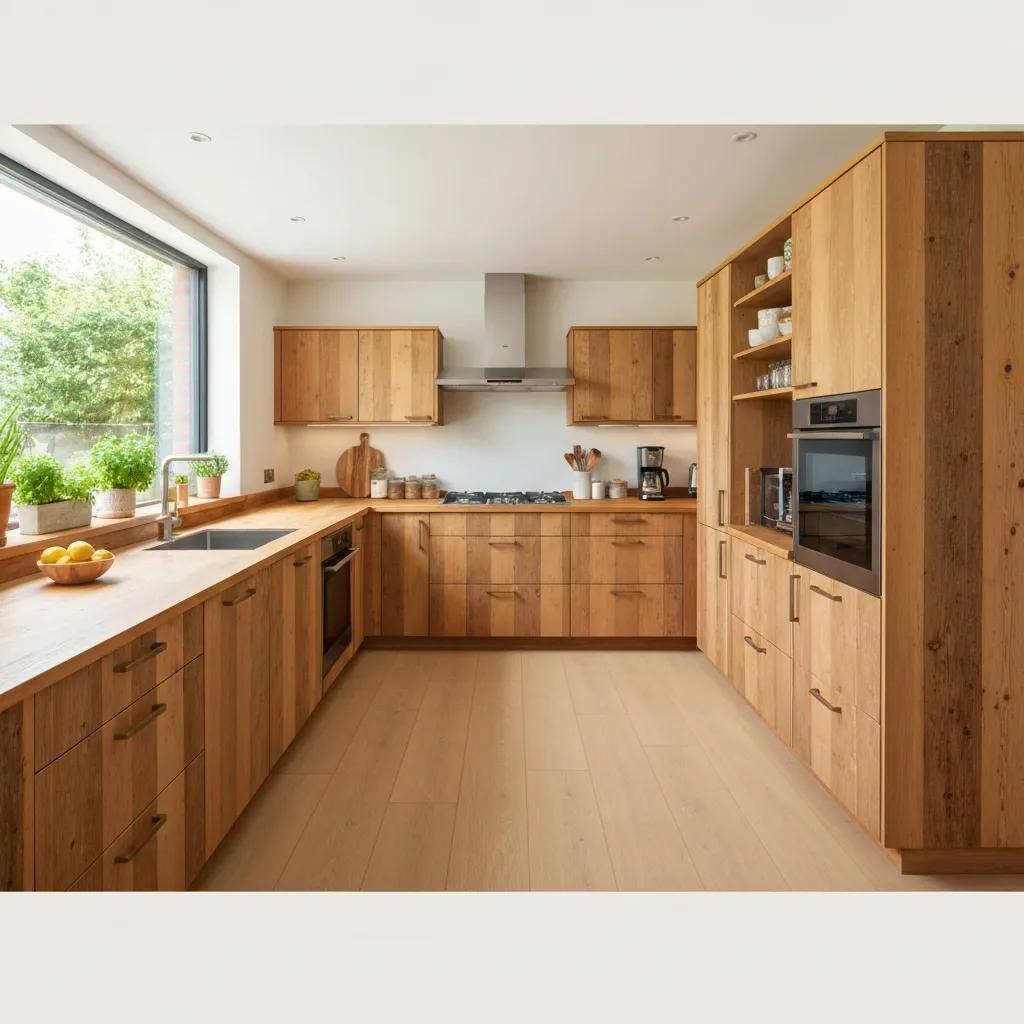
Bespoke sustainable kitchen design combines smart storage, efficient layouts and low‑impact materials to create kitchens that last and waste less. Local designers prioritise made‑to‑measure cabinetry, reclaimed or responsibly sourced timbers and durable, low‑VOC finishes. The process starts with a brief, then moves through detailed layout planning, material selection, manufacture or refurbishment and professional installation so appliances and ergonomics are integrated for long-term use. Choosing local bespoke services reduces transport and makes it easier to organise ongoing maintenance.
If you’re planning a sustainable kitchen in Harrogate or York, look for firms that publish material transparency, offer clever storage solutions and provide clear installation plans. Sustainable Refurbished Furniture By HDS notes “Kitchens coming soon!” — an indication that bespoke, made‑to‑order projects with sustainable materials will soon be available for consultation locally.
The following subsection explains practical ways custom design improves eco-friendly homes.
How can custom kitchen design in Harrogate enhance your eco-friendly home?
Custom kitchen design improves sustainability by optimising storage to cut food waste, specifying durable surfaces to avoid frequent replacements and choosing materials such as reclaimed timber or responsibly sourced boards. A tailored layout improves workflow and energy efficiency by positioning appliances and storage to reduce wasted movement, while long‑lasting finishes mean fewer renovations. Designers can also recommend low‑VOC finishes and robust hardware to protect indoor air quality and longevity. These choices create kitchens that work well for decades, not just years.
Working with a local designer keeps installation and servicing accessible, which helps the kitchen perform better over its lifetime and completes the sustainability picture.
What are the features of made-to-order sustainable kitchens in York?
Made‑to‑order sustainable kitchens typically use reclaimed or responsibly sourced timber for cabinet faces and shelving, low‑VOC paints or oils, strong joinery and custom storage solutions that reduce waste and improve durability. They often include modular or repairable components to make future updates straightforward and layouts designed to improve appliance efficiency. Local installation and aftercare services also extend a kitchen’s lifespan by making repairs and upgrades easier. Together these features create kitchens built for longevity, adaptability and reduced environmental impact.
Considering these attributes when planning a bespoke kitchen helps ensure long-term performance and aligns your project with circular‑economy principles that benefit both your home and the local community.
Frequently asked questions
What should I look for when inspecting refurbished furniture?
Focus on craftsmanship and structural soundness. Check joinery for tight fits, look for even surfaces and test hardware for smooth operation. Signs of thorough restoration include reinforced joints and quality finishes. Also judge whether the piece suits your style and space. Whenever possible, ask about the restoration steps and materials used so you can make a confident purchase.
How can I ensure the sustainability of the furniture I buy?
Choose pieces made from reclaimed or responsibly sourced materials and ask about refurbishment practices, including finish types such as low‑VOC paints or natural oils. Prioritise furniture that can be repaired or refinished rather than disposed of. Supporting local artisans reduces transport emissions and strengthens the circular economy, so prefer local workshops where provenance and repair options are clear.
What are the typical costs associated with bespoke furniture commissions?
Costs vary by material choice, design complexity and the maker’s skill. Custom work is usually pricier than mass‑produced furniture because it’s labour‑intensive, but it often delivers better quality and longer life. Be upfront about your budget so designers can suggest options that meet your needs while delivering good value over time.
How do I maintain refurbished furniture to ensure its longevity?
Regular, gentle care preserves refurbished furniture: dust with a soft cloth, avoid abrasive cleaners and follow the maker’s recommendations for re‑oiling or touch‑up painting. Inspect joints and hardware periodically and address small issues early to prevent larger repairs. A simple maintenance routine will keep pieces looking and working well for years.
Can I customize the finishes on refurbished furniture?
Yes — many workshops offer finish customisation. You can choose colours, textures and techniques such as hand‑painting or spray‑finishing to suit your home. Discuss preferences during consultation so the maker can advise on what works best for the piece’s material and condition. Custom finishes let you create a one‑off piece that fits your style.
What are the benefits of supporting local furniture workshops?
Supporting local workshops reduces transportation emissions, strengthens local skills and fosters a more transparent supply chain. Local artisans often use sustainable materials and practices and provide personalised service, including ongoing maintenance and repair. That relationship adds long‑term value to your purchase and keeps craftsmanship alive in the community.
Conclusion
Choosing sustainable refurbished furniture improves your home’s look while cutting waste and backing local craft. By opting for locally sourced, upcycled pieces you gain unique items with character and durability, and you reduce your carbon footprint. Explore the range of eco‑friendly options in Harrogate and York to find pieces that suit your space — or visit our showroom to see restorations up close and discuss how a sustainable choice can work for your home.

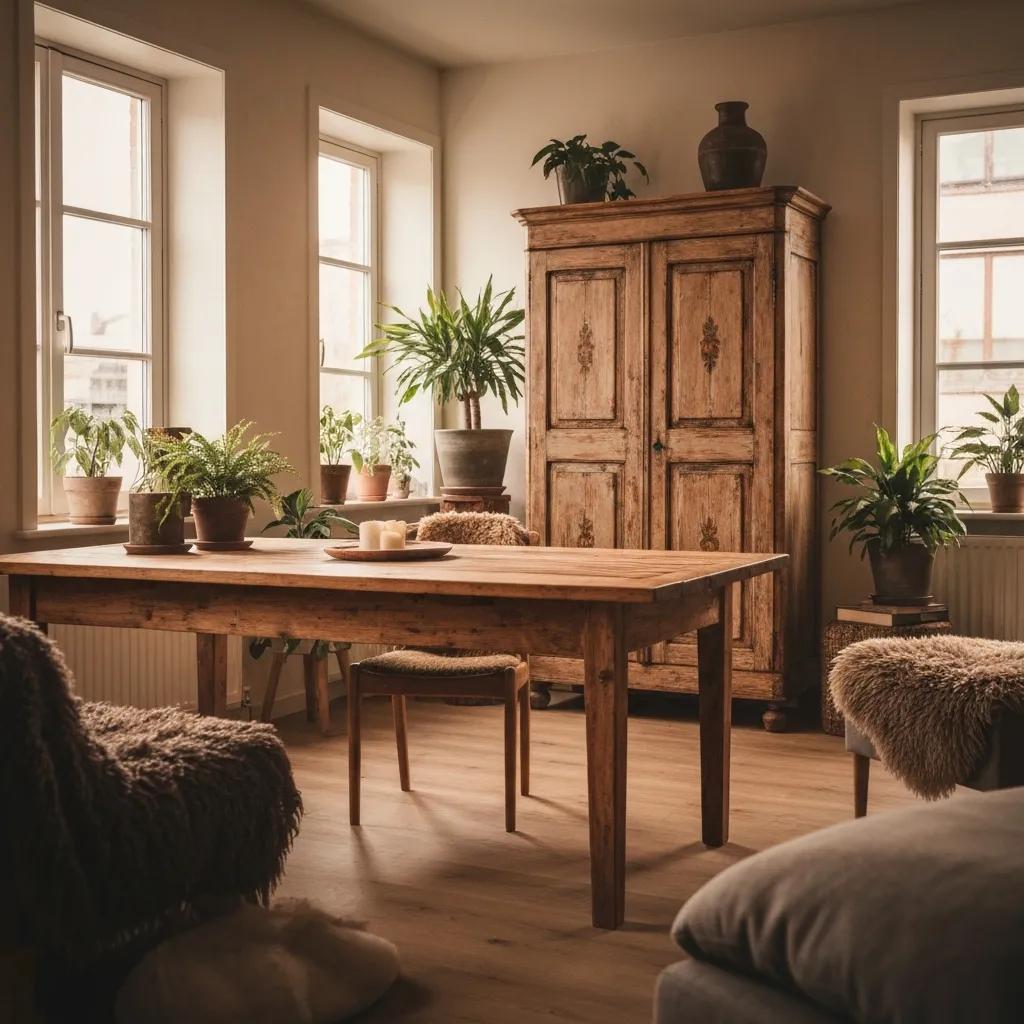
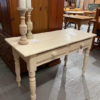
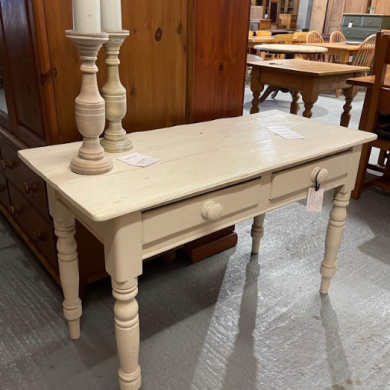


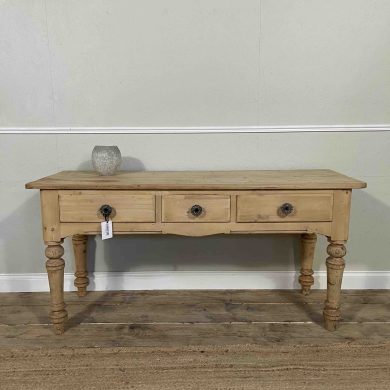
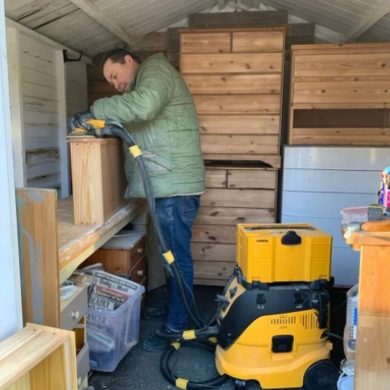
Add comment